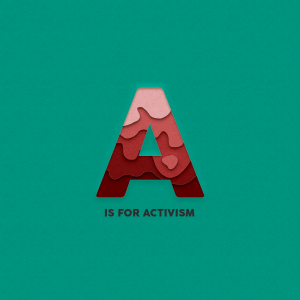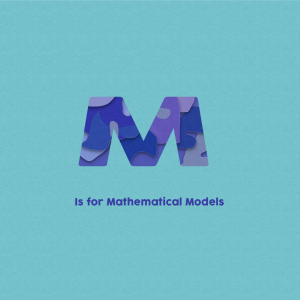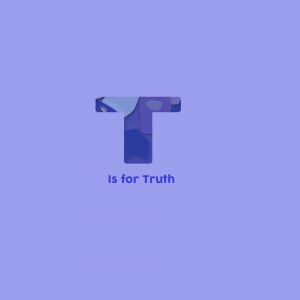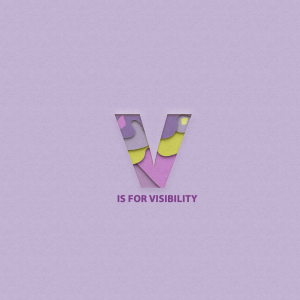ICT and Development
How can we activate Information and Communication Technology (ICT) and New Media (NM) as an instrument for positive, inclusive, and sustainable change? To explore this question; the following paragraph briefly elaborates on Heeks’s (2017) invitation to deconstruct ICT 4 Development (ICT4D) terms. A deconstruction that is preliminary to the construction and understanding of the reciprocal relationship between the interconnected roots of the tree of communication and the soil of change.
Heeks raises a simple question; what does ICT4D mean beyond its obvious abbreviation translation? To define each of the terms is not a unidirectional task. As Heeks puts it: “The only thing we can take as read in ICT4D is the word ‘and’“ (p.6). However, Heeks provides key insights that can be considered a good place to help grasp those four words in theory and consequently in practice. The first insight is that information is distinct from data and knowledge. Heeks further explains that Information and communication can be captured with relevance to the “information value chain” (p.6) that is implemented within a “CIPSODAR” steps model. CIPSO stands for: Capture, Input, Process, Store, and Output, whilst DAR stands for Decision, Action, and Result. To be aware of this value chain is essential to remind us that “data only has developmental value if it becomes information, and information only has value if it is applied to decisions which lead to actions which lead to development results”, (Heeks, p.7). It also reminds us that knowledge production and knowledge management are subject to humans’ input. They go through a process. The who in charge of this process and how is a central theme to consider. Informed by specific ICT and Development scopes, Heeks arrives at defining ICT4D as “the application of any entity that processes or communicates digital data to deliver some part of the international development agenda in a developing country” (p.10). This definition is relatively narrow and simultaneously applicable to various contexts; hence, the blog considers it.
In light of this nutshell deconstruction of ICT4D elements, we come to realize that as Hall (2013) rightly explained how “Knowledge doesn’t operate in a void” (p.33), the elements of culture, representation, interpretations, power relations, control over media input, to name a few, all come to intersect with data processing. An intersection that also reminds us that “information is never consumed in a Vacuum” as Heeks writes, ( p.8). Keeping this in mind broadens how we view development interventions, activism and change in the digital era. It allows us to view the notion of ICT4D while leaning away from technological determinism theory towards the social construction of technology theory. It also helps us centre holistic thinking when approaching ICT4D as opposed to dominant reductionist thinking. Here, I borrow sociologist Acaroglu’s argument that “reductionist thinking has helped us as a species – but it has also led to us collectively having a giant disconnect to the complex and chaotic interconnected systems at play in the world around us”, (Acaroglu, 2016). Reductionist thinking helped us put pieces together in building computers and innovative technologies. It is valuable; yet, it cannot be applied to human complex systems or societies. We are not the sum of individual parts put together. 1+1 is not equal to 2 when it comes to humans. Hence, a simplistic premise of a linear cause and effect relationship between technology, data, AI, and human and social change is problematic and shortsighted.
In light of the above brief conversation, we now gradually converge to touch on some current concepts and their impact on ICT4D design and consequently digital activism. Concepts that might help us deviate from “technocratic globalism” (Kothari, Escobar, Demaria, & Acosta, 2019, p.342). Why is theory important? As Heeks (2017) explains, understanding what theories form ICT4D and development discourses will inform us how the world is viewed and how the desired changed is pictured. A key launchpad in ICT4D research is theorizing what development means in the first place, as Walsham (2017) explains. Theory will help us centre or decenter human rights, equality, democracy, indigenous intellect participation, privacy issues, …etc. when scheming solutions. In short, it will reflect to us what we value, and which logic we can reach our goals.
New Media and Activism
So, how does the architecture of ICT4D appear to be in digital activism? In the AI era, where data is like water- a necessary resource for living, questions of who has control over this resource are key to grasp who has power. “Technology is a means of control” (Pieterse, 2010, p.175), hence, imbalance in power and access is central to notions of NM and E-activism. Henceforth, the main arguments in this blog deviate from apolitical views of technology and activism, and it bears in mind the breadth of inequality’s definition and the scale to measure it; data inequality is not separate from other forms of inequalities. Cinnamon (2019) provides detailed insight into new forms of data inequalities. As data revolution is about investing in data to accelerate economic and social development, Cinnamon advocates to combining Data for Development (D4D), ICT4D and Critical Data Studies to evolve from conventional/simplistic core digital divide concepts.
In light of his arguments, the following who questions pop out:
Who has access to data?
Who is representing the world as data?
Who has control over the flow of data?
For instance, a demonstration of the layers and axis of access to data would help us evaluate who is able to participate in online political debates and hashtag activism. An example of representation inequalities is user-generated data. Cinnamon explains that not everyone participates in crowdsourcing processes that are used to produce data projects like OpenStreetMap (OSM) and Wikipedia. Unpacking the control over the flow of data would help us grasp how online movements gets steered and shaped. Why do some information become influential and others not? Influence is a keyword in online activism and viral attention.
A significant aspect that is central to online activism and social movements’ analysis is what Shirky (2011), reported by Tufte (2017, Chp 4.), describes as “almighty power [ …] as means of collective action”, which is social media. An opposing view is Morvoz’s warning of Slacktivism. Morvoz (2011), cited by Tufte (2017, Chp 4.), defines Slacktivism as “a feel-good activism that has zero political or social impact”. Although it is key to address those concepts when studying social movements, we shall not be limited to polarizing social media’s role being powerful or powerless. Indeed, collective behaviour theories, strategic communication studies, Lievrouw’s views of organizations as reported by Tufte (2017), institutionalism as addressed by Crossley (2002), connective leadership, Castell’s insight of solidarity and individuality in new protests, emotional connectivity, momentum sustainability, voice as value vs voice as process dichotomy as pictured by Couldry (2010) and many more are all keys and present threads for studying online social movements and digital democracy. However, rising research underlines that more focus shall be centred around data processing. Henceforth, Poell & Van Dijck (2018) addresses a key dimension to online activism that centre data flow, e-governance, censorship and platform capitalism in its analysis. One of the questions that Poell & Van Dijck (2018) urges us to think about is how the techno-commercial nature of social media shape these movements. When we see a trending hashtag, whose view does it represents? When we think that the internet has presented us with digital Commons where we all can participate, to what extent is this depiction accurate?
As Poell & Van Dijck investigates the techno-commercial side of the e-activism coin, they highlight the rising tension between platform strategies and activists’ goals and rights. For instance, the advertisement sphere in American profit-oriented tech giants like Facebook demands to have the real identities of online activists. This is a highly challenging issue for the sphere of civic engagement in the Middle East, specifically the Gulf region, where it can be lifesaving to be anonymous on the internet. Another issue which Poell & Van Dijck highlights is content policing. As they write, “all platforms impose rules to regulate offending content and behaviour [..] pornography, graphic violence, hate speech, and trolling” (p.7), which is monitoring that we don’t argue against, yet; what defines a hate speech? What is the umbrella of violent content? How does Facebook and YouTube for instance frame their decision-making when on what to delete and what to keep? Is it democratic to have monopoly censorship over such decisions?
The Four blog posts




In my four blog posts, I scratched the surface of four main themes. The first post touched on e-governance and platform capitalism. Social movements like The Occupy movement, Third Sudanese revolution and Black Lives Matter movement speak volumes of how social media is a true frontline in modern activism and consequently achieves policy and social change. However, Techno dictatorship, if we might call it, might be hindering digital democracy. Many activists reported that a lot of their content, unharming content, that sheds light on ongoing injustice gets blocked or deleted by some platforms. Amid this censorship and controlling surveillance threats, some initiatives are promising to call for platform democracy. Among these initiatives is The Oversight Board.
The second post touched on a structural aspect of the Black Lives Matter movement, which is predictive policing models. Models that reflect racism and bias, consciously or subconsciously. The conclusion was that the flaws of the superficial solutions to societal problems are finding their ways to AI built, models. In this blog, I find O’Neil’s (2016) argument as befitting; “Big Data processes codify the past. They do not invent the future. Doing that requires moral imagination, and that’s something only humans can provide. We have to explicitly embed better values into our algorithms, creating Big Data models that follow our ethical lead. Sometimes that will mean putting fairness ahead of profit” (P.162).
In the third post, the bias in media coverings, and the possibility of witnessing the same bias in monitoring digital debates is addressed. As we simultaneously witness awareness and convivial interconnectivity, we also witness disastrous ignorance and hate speech that is causing further community polarization. Hence, social media companies, like Twitter, for instance, demonstrates efforts to monitor hate speech and misleading information or disinformation on the internet as it must be given more attention and development.
The fourth blog post sheds the light on the elasticity of the word access to the internet, as it was briefly mentioned in blog pose one. It encourages us to consider Sen’s Capabilities Approach (CA) inequality dialogues. According to Schradie (2019), digital activism is inegalitarian in four central ways that are affected by socio-economic class divisions. These four ways are coined in the word ASETs; Access, Skills, Empowerment and Time.
Transformative alternatives and future research
A corporate-driven economy finds its way to digital tools; new transformative initiatives with transformative development paradigms are needed to ensure that racism, unintentional biases and profit-driven logic don’t find their way to technological applications, and not end up veiling these systemic problems with more technology.
In terms of online activism, Poell & Dijck (2018) reveals that more scholarly work is required to study platforms dynamics, “such as hashtags, like buttons, and algorithms” (p.6). They further write: “There is little research that systematically examines how social media user practices, technologies, and business models mutually articulate each other” (p.6).
One of the rising digital debates in Information Systems (IS) and development studies is the advocation to Transdisciplinarity. As Walsham (2017) explored, multi methodology and multidisciplinary are intrinsic features of ICT4D research. A key pragmatic question that Walsham addresses is how all these different lenses and theories, which are at some aspect radically different, can converge together to yield an impactful outcome. In an attempt to explore this question, what comes to mind is that the first stone in reaching this convergence is to have unified shared values and to consider the concepts of Pluriverse Dictionary and its insightful wisdom to learn from. Pluriverse is a vision for decolonization that is rooted in solidarity and empathy and have a media ecology view of technology and the digital era. The thirst to innovation and technofixes shall be informed by precautionary principles and pushed by human creativity over human greed. As Walshman evaluates it “the future lies in a multidisciplinary interaction between researchers, practitioners, and policy-makers”. Interaction is driven by culture, ecology, and plurality. And guided by problem-solvers who are not solely business-centric or solely science-centric.
It is Utopian to think that conflicts will evaporate, differences will disappear, or challenges will diminish. However, systemic fixing is possible. The world doesn’t need wonderous saving, it needs systematic fixing. With this in mind, ICT4D is an instrumental field with promising tools to truly and endogenously facilitate this fixing process. In light of the insightful course’s literature and colleagues’ dialogues, one concludes that an effective notion of ICT4D starts from the final letter; D; the last word; Development. New discourses for development and alternatives for interventions are echoing. Here I resonate with what I found to be a powerful article that concludes as follows: “It is time to abandon ‘development’ goals and demand a post-2030 Utopia” (Kristin & Schöneberg, 2020).
Educational and personal reflection
I consider this blogging exercise as the most challenging, yet, the one with the richest outcomes in technical knowledge, writing skills, and ComDev learnings.
Enlightened by Sen’s view, “Development is freedom”, I was reading and analysing events in search of communication for liberation instead of communication for development. This would explain why I may have focused on the dark sides of technology. I was driven by questions about freedom and, hence, examined sources of unfreedom. In my humble belief, capitalism is the largest most dominant source of unfreedom. So, my overall investigation is implanted against a system which I don’t believe in its effectiveness. The nature of this assignment gave me a great room to express my belief and framing it in a less academic or formal context facilitated the process.
I have learned not to limit myself to specific regions (e.g. the Middle East) or specific areas of studies (e.g. politics and journalism). I have learned by exploring some of my colleagues’ blog content how one topic, event, or techno solution has various perspectives and interpretations.
Finally, I learned how little I know, and how rich, universal, and necessary the field of ComDev study is. The organic nature of the blogging exercise further signified to me how truly deep our field is into the worldwide happenings. As I hope to gradually bridge myself into organizational aid work, I intend to consider aid blogs as a key source of knowledge, as I agree with Tales from The Hood (2011), cited by Denskus & Papan (2013) depiction “Aid bloggers are like a collection of mentors” (p.461). I hope to continue blogging in a simple accessible, yet, creative and appealing lingo to raise awareness about development and social change, with a lot of ‘unlearning and learning’ along the way. Last and surely not the least, this learning experience could not have been this rich without my dear colleagues’ discussions and insights.
Word Count: 2489
References
- Acaroglu, L. (2016). Everyday Superpowers for Making Change. Retrieved from https://medium.com/disruptive-design/superpowers-for-making-change-146555b632ee
- Cinnamon, J. (2020) Data inequalities and why they matter for development.Information Technology for Development, 26:2, 214233, DOI: 10.1080/02681102.2019.1650244
- Denskus, T. & Papan, A. (2013). Reflexive engagements: the international development blogging evolution and its challenges. Development in Practice 23:4, 435-447.
- Hall, S. Evans, J. and Nixon, S. (ed.) (2013).Representations. Cultural Representations and Signifying Practices, Second Edition. London: Sage.
- Heeks, R.( 2017).Information and Communication Technology for Development (ICT4D).
- Kothari, A., Salleh, A., Escobar, A., Demaria, F. & Acosta, A. (2019). Pluriverse-A Post-Development Dictionary.New York, NY: Columbia University Press.
- Kristin, M. & Schöneberg, J. (2020). It is time to abandon “development” goals and demand a post-2030 Utopia. Retrieved from
https://www.convivialthinking.org/index.php/2020/06/24/it-is-time-to-abandon-development-goals-and-demand-a-post-2030-utopia/#more-1377 - O’Neil, C. (2016). Weapons of math destruction: How big data increases inequality and threatens democracy (First edition ed., Vol. 4.1). New York, NY, United States: Broadway Books. DOI: http://governance40.com/wp-content/uploads/2019/03/Weapons-of-Math-
- Oversight Board. (n.d.). Independent Judgment. Transparency. Legitimacy. Retrieved September 27, 2020, from https://www.oversightboard.com/
- Pieterse, J. N. (2010). Development Theory (2.ed.). London: Sage.
- Poell, T. & van Dijck, J. (2018). Social Media and new protest movements. SAGE Handbook of Social Media. London: Sage.
- Tufte, T. (2017). Communication and Social Change: A Citizen Perspective. Cambridge: Polity Press.
- Walsham, G. (2017). ICT4D research: reflections on history and future agenda. Information Technology for Development, 23:1, 18-41. DOI:10.1080/02681102.2016.1246406
